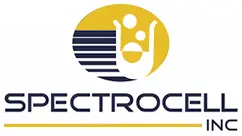SEO and Great Web Design
Time to Read: 4m 37s
Studies have shown that people decide whether or not to stay on your site within the first 10 seconds. In the past, there wasn’t much overlap between designing a website and optimizing it for search engines. Web designers and search engine marketers alike, often can easily get caught up in other best practices and forget about usability and user experience. It is necessary that your website isn’t frustrating to use. Luckily there are numerous subtle web design improvements that can increase traffic and conversions. Many times the story behind certain SEO performance rates goes back to the website design. These stories can explain what website design adjustments are needed. Web design choices can often interfere with crawlability, usability, accessibility, and findability.

Plan an SEO friendly design from the Start
It all starts with building an SEO friendly site, one that allows the search engines to crawl through the content and understand the website easily. Many times, people don’t think about SEO until after designing a website. SEO is not something you can just add on to any existing site, it starts in the site-building process. Building a website with SEO in mind requires pre-planning and a strategic approach to communicating the business goals and objectives. Some core design elements to pay attention to in the site-building process are the page layout, visual hierarchy, site navigation, form entry and the home page. These elements will help with putting the site together in a way that keeps the user in mind.
You Don’t Have to Choose Between Great Design and SEO
People may think they have to compromise on design to make a well-optimized website. Unfortunately, many aesthetically appealing sites lack in SEO and vice versa, but this doesn't have to be the case and there are ways around this. So, what are some of the ways we can make websites that are both pleasing to the eye and optimized for Search engines?Use Web Fonts
In the past, those trying to optimize their websites were limited to standard fonts such as Arial and Helvetica. However, webfonts allow designers to achieve different font styles while still being crawlable. Web fonts keep the actual text of content while changing the font style. This way, designers can avoid using graphic images of the text since these images won’t be crawled by the search engines.
Expandable DIV
An expandable div is a way to collapse your content but still expanded for users if they want to see more. This content, even when collapsed, will always be visible for search engines to index and crawl. Expandable Divs make the site design more appealing by keeping the site looking minimalistic and clean while adding more content. This is a great way for users to enjoy their experience and still create opportunities for SEO. INSERT

Design to Optimize
Developers and SEO teams need to work together in order to appreciate and understand each other’s website requirements. Taking a holistic approach to websites means having everyone involved in the site design and building process. Starting with a good foundation can prevent future issues from showing up. There are so many variables in a website, it’s not easy to predict how users will respond to different site design elements. However, having a website that is set up without any barriers is a great start.Web Design with SEO Impact Infographic
The infographic below highlights many design elements that help with SEO: Some of the design elements mentioned are: Hot Spots: locations on a page that are likely to grab the users attention Trust Signals: Elements such as certifications, awards, testimonials build trust and credibility with users. Calls to Actions: These are used to encourage the user to take action on your site. USP’s: Unique Setting Points are the unique and positive attributes that identify your business. Strategically positioning these on your site, can keep users engaged and interested. Billboards: This is a great way to grab people’s attention and drive more traffic to your site. Treat these as you would treat an advertisement in a shop window.




